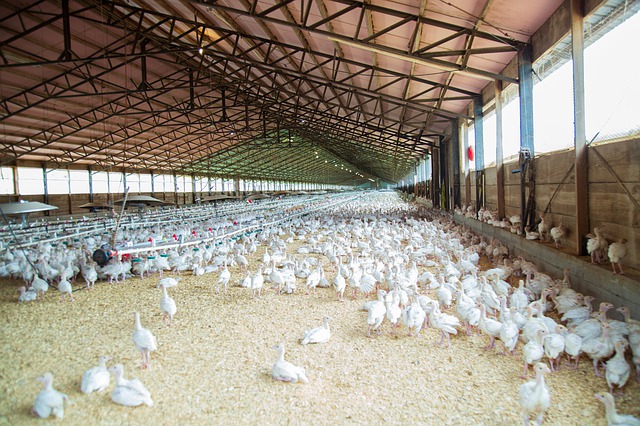Mixed response from English poultry producers to legislation change

New legislation offering some farmers the potential to apply for new agricultural buildings for a fraction of the cost of full planning permission has received a mixed review as part of a package of measures aimed at helping the sector.
The changes increase the maximum area allowable for development by 50% from 1,000 sqm to 1,500 sqm, but there has been frustration that livestock buildings do not benefit from the change, remaining at the current 1,000 sqm threshold.
Planning consultant Ian Pick said the savings for farmers wanting to put up new agricultural buildings could be substantial: “Under permitted development for a 1,500 square metre site the council fee is £120, whereas on a full planning application it rises to £4,992. If you apply for a new build on a full planning application with the plethora of technical assessment which the council may ask for, you could be spending thousands just for planning permission. If you are able to put it through as a prior notification, then it might only cost you around £1,000.”
Buildings which house livestock are excluded from the changes, meaning that the most an egg producer could build under permitted development legislation is 1,000 sqm, which is the rough equivalent of a 9,000 bird unit. Other agricultural uses are allowed though, so a new building could be used for processing, storage or training.
Rachel Hallos, NFU vice president, said she felt the announcement would support the modernisation, expansion and diversification of farms across the country: “These changes are essential opportunities for farmers who wish to diversify their business, allowing them alternative streams of income and the ability to further support their local rural economy.
“However, it is disappointing to see that livestock buildings remain excluded from the changes. While it’s good news that Class Q rights, which allow farmers to convert agricultural buildings into homes, are being expanded as the NFU has long asked for more rural housing, it’s also disappointing that these will not be extended to protected landscapes either. These areas are often the hardest to be developed on and opening up this option for farmers could significantly benefit their local communities.”
Up to now, few poultry farmers have chosen to exercise their options under previous permitted development rules due to their small size. Initially, only 465 square metres was allowed when the scheme was created, rising to 1,000 square metres 5 years ago.”
Applying for permitted development gives the local authority a maximum of 28 days to object to any proposed changes. The onus is on them to satisfy themselves that the site passes a number of checks. In the case of prior notification for livestock, specifically the development must be 400m from the nearest protected dwelling.
Farming minister Mark Spencer said the changes would provide farmers with freedom to decide the best uses for buildings on their land, without needless bureaucracy holding them back. “We are listening to farmers and putting them at the heart of future development of our rural areas. Helping farmers secure their businesses and get on with the important job of producing food is our top priority.”
The amendments deliver on one of the pledges made by the prime minister Rishi Sunak at the recent Farm to Fork Summit.
Read also
Wheat in Southern Brazil Impacted by Dry Weather and Frosts
Oilseed Industry. Leaders and Strategies in the Times of a Great Change
Black Sea & Danube Region: Oilseed and Vegoil Markets Within Ongoing Transfor...
Serbia. The drought will cause extremely high losses for farmers this year
2023/24 Safrinha Corn in Brazil 91% Harvested
Write to us
Our manager will contact you soon



